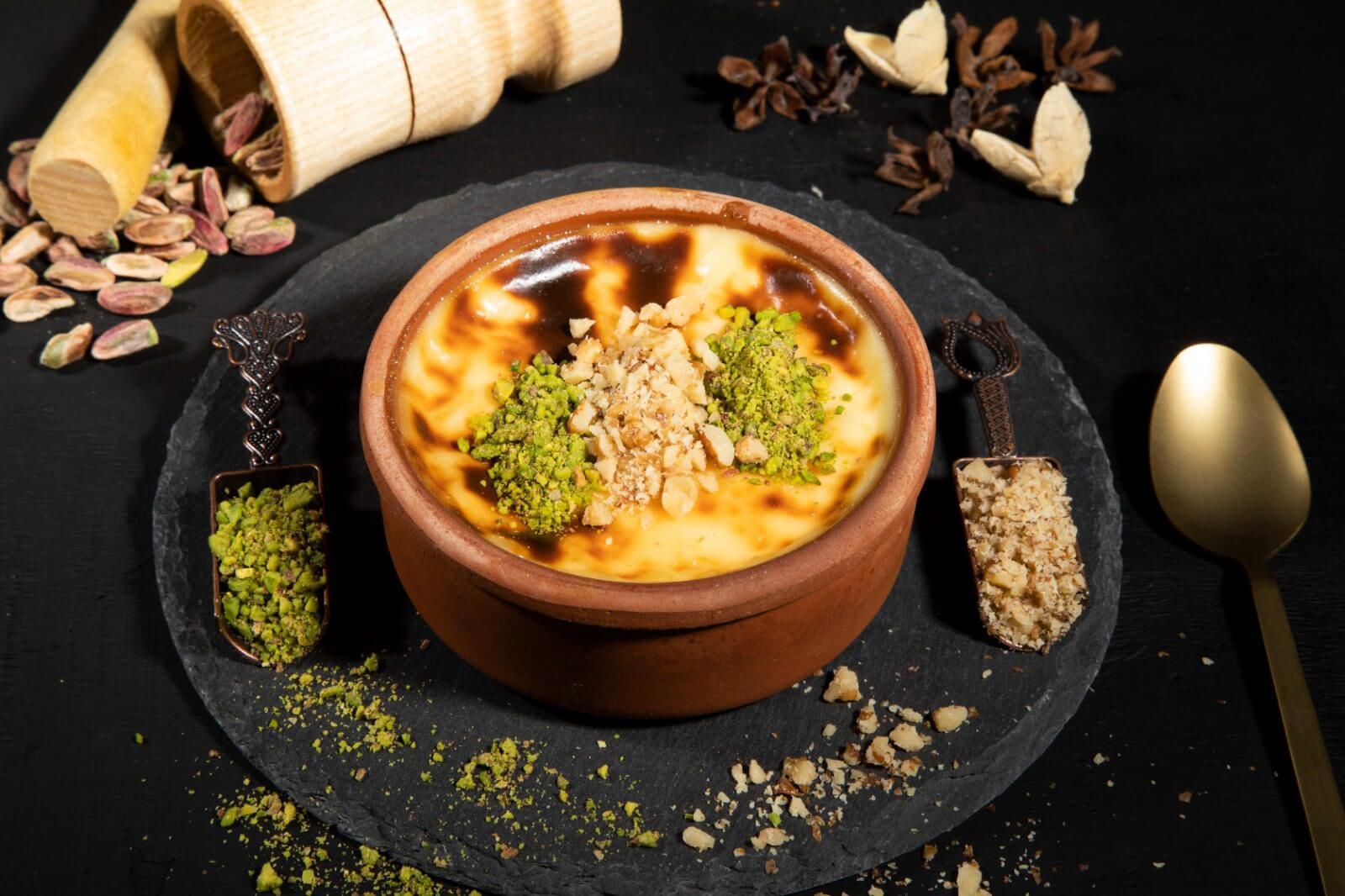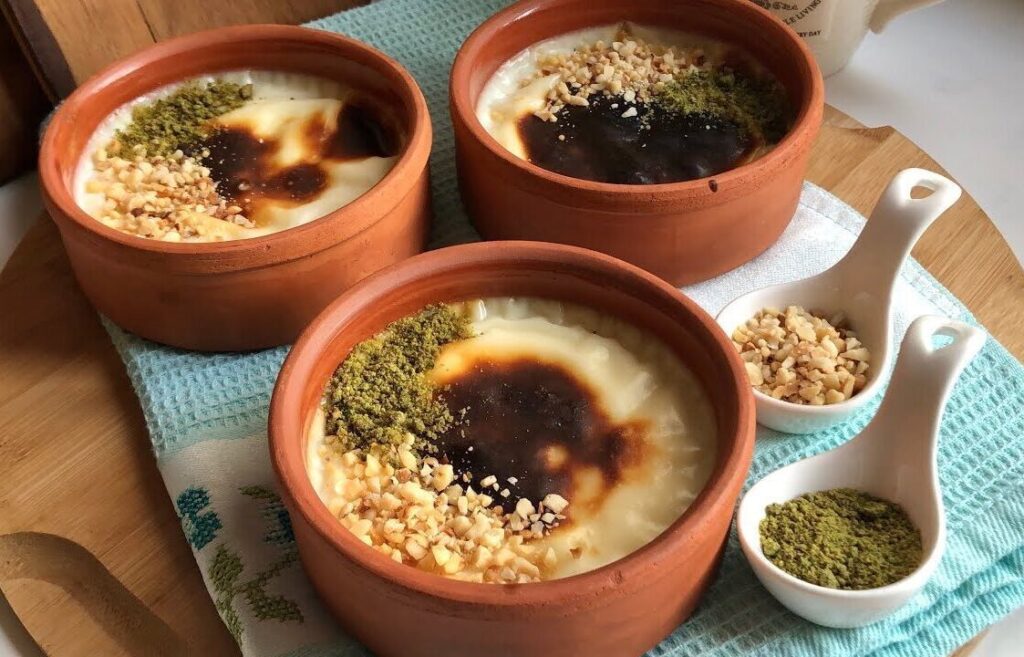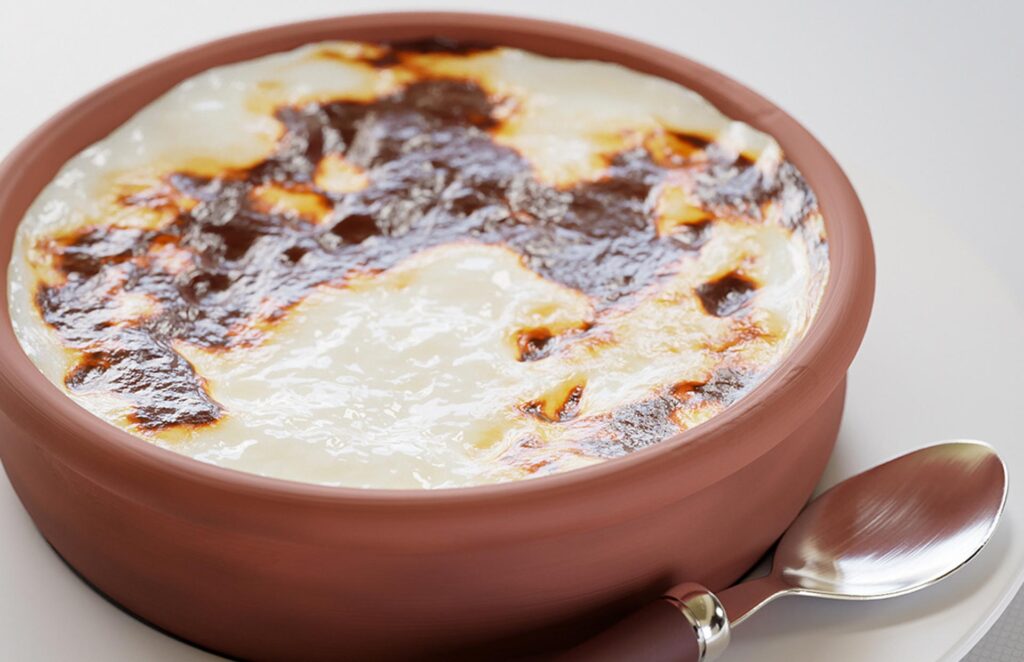Baked rice pudding is a beloved dessert that combines simplicity, tradition, and indulgence in every spoonful. Made with basic ingredients such as milk, sugar, rice, and eggs, this creamy and comforting dish is a staple in many cultures across the world.
What makes it particularly special is the golden crust that forms when it’s baked — a slight crisp on the surface with a soft, luscious interior.
Unlike stovetop puddings, which are stirred constantly for smoothness, baked rice pudding allows for a more hands-off preparation method that results in a deep, baked-in flavor.
It’s often associated with childhood memories, warm family gatherings, and the kind of rustic charm that only homemade desserts can provide.
Whether you’re preparing it for a cozy night in or for a festive occasion, learning how to master the technique of baked rice pudding will elevate your dessert game.
In this guide, you’ll find everything you need to create a perfect, golden-topped pudding with a creamy base every time.
Baked Rice Pudding: Ingredients And Preparation Tips
To create a successful baked rice pudding, it’s essential to start with quality ingredients in accurate proportions. Since the recipe is simple, every ingredient plays a major role in the final flavor and texture.
Here’s what you’ll need for a standard 6-serving recipe:
-
1 liter whole milk
-
½ cup short-grain or medium-grain rice (such as Arborio)
-
¾ cup granulated sugar
-
2 large eggs
-
1 teaspoon vanilla extract
-
A pinch of salt
-
Optional: ground cinnamon, nutmeg, lemon zest
Start by rinsing the rice thoroughly to remove excess starch, which helps prevent clumping. In a saucepan, partially cook the rice in water or milk until it’s about 80% done. This ensures that the rice finishes cooking evenly in the oven and blends well with the custard mixture.
In a separate bowl, whisk together the milk, sugar, eggs, vanilla, and salt until smooth. Add the semi-cooked rice and mix well. Pour the mixture into a greased baking dish or into individual ramekins for personal servings.
Place your baking dish in a larger roasting pan filled halfway with hot water — a bain-marie technique that keeps the pudding from overcooking and prevents the custard from curdling.
Choosing The Right Type Of Rice For The Creamiest Texture
The type of rice you choose is a critical factor in achieving the smooth, creamy texture that defines a great baked rice pudding. Not all rice varieties behave the same way during baking, so it’s important to pick one that absorbs milk well while maintaining a tender bite.
Short-grain and medium-grain rice varieties like Arborio, Japonica, or even pudding rice (common in the UK) are excellent choices. They have higher starch content, which naturally thickens the mixture and results in a luscious, creamy texture.
Avoid long-grain varieties like Basmati or Jasmine. While these are excellent for pilafs and savory dishes, they don’t release enough starch and may result in a thinner, grainier pudding.
Brown rice can be used for a more nutritious version, but it will need longer pre-cooking and baking times.
For a more decadent result, some chefs even mix cooked rice with a small amount of heavy cream or condensed milk to enhance richness. While optional, this technique can take your baked rice pudding to a more luxurious level.
Baked Rice Pudding: Baking Techniques For The Perfect Crust
One of the standout features of baked rice pudding is its top crust — a thin, golden-brown layer that forms as the pudding bakes. Achieving this perfect finish requires attention to baking temperature, placement in the oven, and cooking time.
After pouring your rice and custard mixture into the baking dish, be sure to bake it uncovered. Covering the dish will trap steam and prevent the top from developing color and texture. An uncovered dish allows evaporation, which contributes to the slight caramelization on top.
Bake the pudding at around 170–180°C (340–350°F) for 45–60 minutes, depending on the depth of your dish.
You’ll know it’s ready when the top is golden and the edges have set, though the center may still jiggle slightly. This wobble is fine — the pudding will continue to firm up as it cools.
For a more intense crust, consider brushing the surface with a thin layer of beaten egg yolk halfway through baking. This technique, commonly used in Turkish or Middle Eastern versions of baked rice pudding, results in a glossy, almost brûléed effect that looks as good as it tastes.
Common Mistakes To Avoid When Making Milk-Based Desserts
Even though baked rice pudding is straightforward to prepare, certain missteps can affect the result. Avoiding these common mistakes can make the difference between a disappointing dish and a creamy, indulgent dessert.
One of the most frequent errors is undercooking the rice before adding it to the custard. Raw or undercooked rice won’t fully soften in the oven, leading to a gritty texture. Always parboil your rice to ensure even cooking throughout.
Another issue arises from incorrect baking temperatures. If the oven is too hot, the milk proteins can curdle, resulting in a split custard. A moderate temperature and the use of a water bath help maintain a stable environment for even cooking.
Using low-fat milk can also hinder the richness and creamy finish of the pudding. Always use full-fat or whole milk for best results. And finally, overbaking can dry out your dessert. It’s important to take the pudding out of the oven while it’s still a bit wobbly in the center.
Perfecting your baked rice pudding takes practice, but once you master these basics, it will become one of the most reliable and crowd-pleasing desserts in your recipe book.
Baked Rice Pudding: How To Serve And Store It Properly
Once your baked rice pudding has cooled slightly, it’s ready to be served — either warm or chilled. Warm servings offer a creamy, comforting experience, while chilled versions tend to firm up and showcase the caramelized top more vividly.
For an elegant touch, dust the top with cinnamon, nutmeg, or cocoa powder just before serving. Fresh fruit like strawberries or raspberries can provide contrast to the pudding’s richness.
A drizzle of honey or a spoonful of fruit compote also adds visual appeal and layers of flavor.
Individual ramekins are great for presentation and portion control. If you’re serving a crowd, a large dish can be brought directly to the table with a large spoon or ladle for a rustic effect.
To store leftovers, cover the pudding with plastic wrap or transfer it to an airtight container. It will keep in the refrigerator for 3 to 4 days. Avoid freezing, as it may cause the custard to separate. If reheating, do so gently in the microwave or oven to preserve the creamy texture.
With the right storage and presentation techniques, your baked rice pudding can remain a standout dessert even days after baking.
See you in the next post,
Anil UZUN


